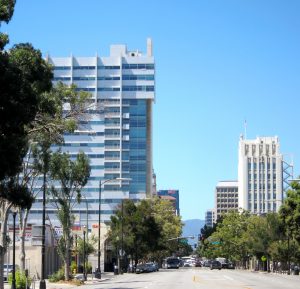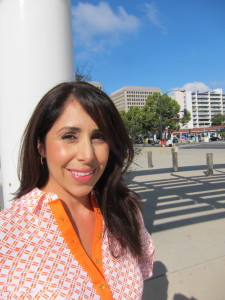By Sharon Simonson
An immigration museum in the vein of Ellis Island and “immigrant community centers” are among the approaches the city of San Jose is exploring as part of its immigrant outreach initiative and new Office of Immigrant Affairs.

Many San Jose immigrants are afraid of the city’s police, don’t find their work environments welcoming and have mixed emotions about their children’s schools, according to focus group participants convened to advise on the new office’s mission and direction.
San Jose City Hall hopes to position itself as a “change agent” for the San Jose community and a hub of communications and influence for immigrants’ benefit.
In the balance is San Jose’s responsiveness to its fastest growing populations and its relationship with the highly skilled immigrant workers helping to fuel expansion of Silicon Valley technology industries and the regional economy.
City Manager Norberto Duenas’ office seeks to mount a public-education campaign to inform San Jose’s native-born population about the contributions of immigrants to the city’s employment and tax base, according to a proposed “immigrant-integration plan” to go before the City Council on May 17. The city manager also wants to persuade school districts and agencies including the Santa Clara Valley Transportation Authority and U.S. Citizenship and Immigration Services and the private sector to enhance their cultural literacy including language translation. More than half of San Jose’s immigrants say they don’t speak English that well.![]()
Immigrants will account for all U.S. population growth for the next 44 years, the census bureau projects. San Jose is among a wave of U.S. cities creating immigrant affairs offices and doing work to recruit and retain immigrant populations as part of larger economic development efforts.
San Jose’s immigrant population of more than 380,000 is expanding nearly twice as fast as its U.S.-born population, pushing the city’s immigrant-share from not quite 38 percent of the total population to nearly 39 percent in the six years from 2009 to 2014, according to the most recent census bureau estimates.

At least three San Jose City Council members are foreign-born: Manh Nguyen, Tam Nguyen, both born in Vietnam, and Ash Kalra, an Indian-American who was born in Canada. City Manager Duenas is also foreign-born.
About a quarter of San Jose’s population is non-Hispanic white, about a third is Hispanic and about a third is Asian. The remaining fractions are black, Pacific Islander and American Indian. About a third of Hispanics are foreign-born, and nearly 60 percent of San Jose’s Asians are foreign-born. The Vietnamese are San Jose’s largest Asian population at 10 percent of the city’s total. About 8 percent of San Jose’s non-Hispanic white population is also foreign-born.
Duenas is proposing to spend $250,000 in the upcoming fiscal year on three city priorities: translation services; customer-service training including cultural competency instruction for city workers; and enhancing immigrant engagement with the city by getting more immigrant residents on city boards and commissions and other measures.
Immigrants’ experiences in San Jose are in no way monolithic, with vast differences between high-skilled workers who are recruited to the region to fill jobs and those, such as the Vietnamese, who are refugees or unwilling migrants pushed from their homelands by war or persecution.
The goal, the city says, is to make San Jose “the most successful multi-cultural city in the world” by creating a more welcoming experience for immigrants.
Among the greatest barriers to immigrants’ participation in the community at large and within civic affairs more particularly is language, the city found. More than 90 percent of San Jose’s immigrants speak a language other than English at home and not quite 56 percent say they speak English “less than very well,” according to the U.S. ![]() Census Bureau. San Jose city’s website and staff reports and communication are published in English only.
Census Bureau. San Jose city’s website and staff reports and communication are published in English only.
The draft plan is based in part on 17 city-convened focus-group meetings to hear directly from immigrants and the social agencies that serve them. The outreach was most heavily skewed toward the city’s Hispanic community though it included meetings with Ethiopian, Eritrean, Muslim, Persian and Vietnamese community members. The city is still reaching out to its Asian Indian, Filipino and Chinese immigrant populations.